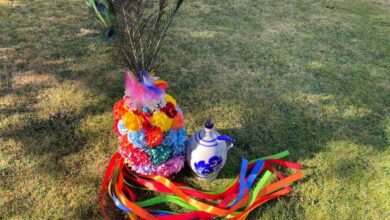
The European continent and its languages have seen birth and decay, life and destruction. Manx, a little jewel of the Celtic family, contains linguistic marks that date back to a time when ancient travellers wandered in Europe, hungry for land. Today, this language, which men almost forgot a long time ago, is making a come back.
Manx, Gaelg Vanninagh, belongs to Celtic language family and is spoken on the Isle of Man in the heart of the Irish Sea. The island with about 80,000 inhabitants is subordinate to the British crown, but it is neither part of the UK nor the EU. Instead, the island is in a customs union for goods with Great Britain and the EU.
Of Irish mother and Norse father
In a time before tariff unions and Brexit talks, Druids from the West and Vikings from the East settled on the Isle of Man. Around 500 AD, during the Irish expansion phase, the Celtic winds carried Old Irish speakers to the shores of the Isle of Man. In the 8th century, the Norsemen came and conquered the isle, influencing its topography. This Northern mix brought Manx to life. The earliest documentation dates back to the 17th century, such as the agenda of the Anglican Church, the Book of Common Prayer.

Centuries later, in 1765, when the United Kingdom annexed the island, the growing dominance of English weakened the local language. During the 19th century, Manx speakers grew more and more indifferent to their mother tongue, choosing instead to speak English. The introduction of compulsory schooling in 1872, which mandated English as the sole language for education, meant that the fate of Manx was set in stone. Parents stopped raising their children to be bilingual, which led to a radical decrease in native speakers. In 1974, the last native speaker, a fisherman named Ned Maddrell, passed away – and with him a precious part of the Northern European heritage.
From Unescapable Agony to Unforeseen Resurrection
Manx-enthusiasts bemoaned the slow death of the language. One of them was Brian Stowell. Before Maddrell’s death, he recorded tapes to safeguard pronunciation, and preserve the ashes of a then presumed dead tongue. His effort facilitated significantly the study of this language. It was one of the first revitalisation measures.
Another resuscitation attempt came from the top. In 1985, an official resolution of the Tynwald, the island’s Parliament, officially recognised Manx for the first time, albeit to a limited extent. The Coonceil ny Gaelgey, a Manx Gaelic Advisory Board, was established, together with the Manx Heritage Foundation, the Culture Vannin. This standardised the official use of the language and provided translations services. Soon, bilingualism among children was breathing new young life into the language. Nowadays, the Bunscoill Ghaelgagh elementary school in St. Johns, is notorious for teaching in Manx only.

Moreover, in 2015 the Department of Education, Sport and Culture (DESC) and Culture Vannin established the Manx Language Network. The network seeks to develop ideas on the future and maintenance of this language. For instance, it published The Manx Language Strategy 2017-2021 and the Action Plan on its website.
Technology and social media also played a role in revitalising the language. Adrian Cain, for instance, is a dedicated Manx tweeter and promotes the language on YouTube. Additionally, the Culture Vannin developed a free language learning app in 2013 – an example of modern tools reviving ancient languages.
Is Manx a Flourishing Yet Fading Celtic Flower?
Despite all these efforts, the future of Manx is still uncertain – and downright endangered. Even though the number of people using Manx as a second language is growing, there are no real native speakers. In 2015, approximately 1800 people knew Manx, 2% of the total island’s population. We can say that the language is indeed alive, but still not well enough. Only the future can tell if and when the first Manx babies will speak their first word in Manx.
However, the life and death, rebirth and growth of the Manx language demonstrate that obscure and lost tongues can, in fact, be rescued. With its Irish and Norse family tree, it is more than welcome back at the large European languages family table.





